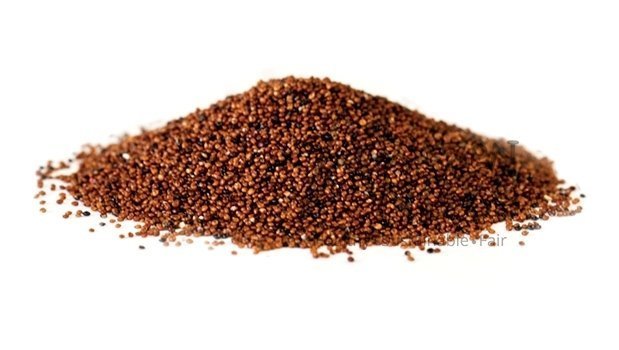Kaniwa or Cañihua (Chenopodium pallidicaule)) is an upright plant form . Its size varies between 20 and 60 cm. Both the stems at the top , like leaves and inflorescences are covered with white or pink vesicles.
Cañihua has its origin in the Andes of southern Peru and Bolivia and their culture is closely related to the pre-Inca Tiwanaku culture that developed in the two countries. At the time of the Spanish conquest, this plant as quinoa was cultivated and was forbidden, because the Spaniards realized that the Indians used it in their religious ceremonies.
Origin: The Cañihua tends to be found in the highlands , where it is grown to 3,800 meters above sea level. The area of increased production is on the north of Lake Titicaca.
Canihua : Saponin and gluten free , has the same nutritional properties as Quinoa.
Its grains do not contain saponin unlike quinoa which has to be washed several times to remove and avoid the bitter taste.
It is an excellent source of protein and rich in amino acids such as tryptophan, isoleucine and lysine – vital for tissue growth and development. It also scores exceptionally high in levels of iron, magnesium and calcium. Naturally gluten-free with low GI, Canihua is one of the least allergenic food around
Cañiwa is also suitable for people suffering from celiac disease because Kañiwa seeds are gluten – free . It has prove that consumption of this grain reduce risk of Cardiovascular diseases .
Besides , Cañihua is an Andean grain with more fiber . It has a high energy value. Satisfies 25% of proteins requires an adult. It is rich in iron, magnesium and potassium. It is an excellent antioxidant. It is excellent for children, youth and adults.
Energizing and revitalizing; Being an effective and natural energizer and high enzyme content helps revitalize our body against aging.

Cañihua has a high protein content (15-19 percent), high proportion of sulfur amino acids . Its main components are : calcium , phosphorus, iron , thiamine, riboflavin , niacin , ascorbic acid and aminocácidos phenylalanine , tryptophan , methionine , leucine, isoleucine , valine , lysine , threonine , arginine , and histidine .
Presentation of kaniwa:
We are Peruvian Exporters of the best organic Kaniwa on the market, our products are NOP and EU organic certified.
We offer Kaniwa in bulk (wholesale prices) and products for final consumption:
- Organic Kaniwa grains
